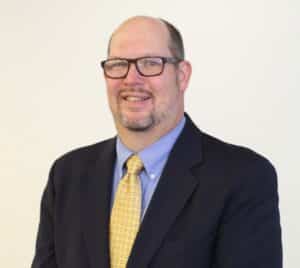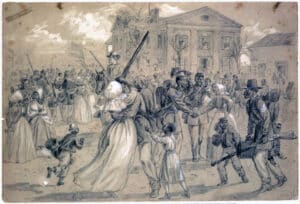
The War of Northern Aggression.
The War of Secession.
Whatever you call America’s bloody internal squabble, the Civil War, more than 150 years later, remains a hot topic of debate and romanticism, both for the Everyman and academics.
Dr. Christopher Huff, an assistant professor teaching history in the humanities department at Beacon College — the first higher-education institution to award bachelor’s degrees primarily to students who learn differently — earned the opportunity to see firsthand how the adage “a picture is worth a thousand words” helped sow the seeds of that mystique.
Huff was one of 30 college and university academics selected from a pool of 100 applicants to participate in “The Visual Culture of the American Civil War and Its Aftermath.” The American Social History Project/Center for Media and Learning at the City University of New York Graduate Center hosted the two-week session.
During the program, noted historians and archivists lectured on examining fine arts, ephemera, photography, cartoons, maps, and monuments to discover how the war’s history was broadcast and recorded. Participants also learned how these media shaped ideological battle lines before and after the war.
“For many historians, the Civil War stands as the most significant pivot point in the nation’s history,” Huff said. “Historians understand race to be the central theme of American history — the war and Reconstruction were the period where that racial relationships among Americans fundamentally changed. Given the current debates and continuing freedom struggle embodied in the Black Lives Matter movement, it remains important to examine closely a key historical era when the nation had to address racial attitudes and policies head-on.”
Though not a Civil War historian, the institute’s focus on visual culture intrigued Huff, whose teaching incorporates films, political cartoons and photography. Also, the breadth of the program — which covered the African-American experience from the start of the Civil War to the rise of Jim Crow in the 1890s — dovetailed nicely with preparation for an upcoming African-American history course this fall.

Participants enjoyed hands-on visits to the Metropolitan Museum of Art, the New York Public Library and the New York Historical Society’s archives and other venues.
The institute was billed as an opportunity to introduce “participants to the rich body of new scholarship that addresses or incorporates Civil War and postwar visual culture, prompt them to do further research, and help them to use visual evidence to enhance their scholarship and teaching about the war and its short- and long-term effects.”
For Huff, the session lived up to its billing.
“The institute provided a unique educational opportunity: I spent two weeks with some of the top scholars in the field of visual culture exploring the ways in which art, sculpture, photography, illustrations, maps and public memorials teach us about the nation’s past,” he said. “I developed a greater appreciation for and understanding of how objects that we encounter every day and that are often meant to be quickly tossed aside possess a great deal of historical information.”
An appreciation Huff says aligns perfectly with teaching Beacon students.
For many Beacon students, their disability makes it difficult to study history in the more traditional manner — through books or lengthy reading assignments,” he said. “By studying the mediums of visual culture and how to interpret them, I can better use them in all my classes as a way of conveying historical knowledge. Students will gain information about the past by learning how to ‘read’ photographs, paintings, maps and other visual artifacts from the nation’s past.”